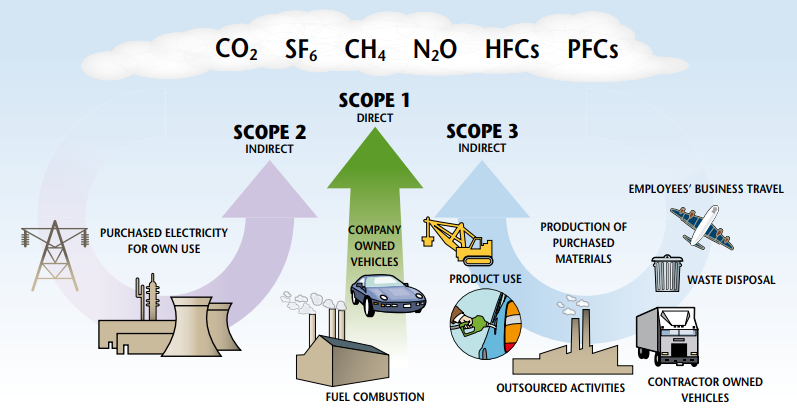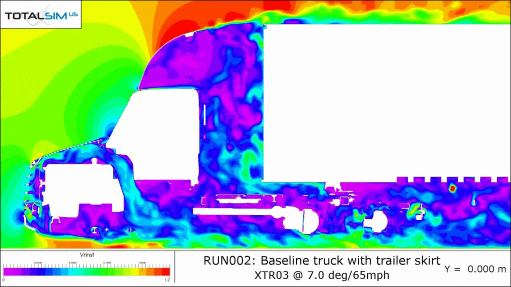Scope 3 Emissions: What You Need to Know in 2023
Companies are under increased pressure to monitor, control, and reduce their carbon emissions — and that pressure is set to continue. There are a number of ways to make key changes, from simple fuel emissions reductions to identifying problematic hot spots across operations. Tackling Scope 3 emissions opens an additional opportunity to uncover ways to lower overall environmental impact and adopt climate-friendly operations and policies.
What are Scope 3 Emissions?
Most global and public companies report and account for their carbon emissions, especially those generated from direct operations. But more and more operations leaders are honing in on Scope 3 emissions as a new area of demand and opportunity as regulatory pressures mount. In fact, many companies who gain a foothold in monitoring, managing, and reporting Scope 3 emissions are finding themselves at a competitive advantage.
Scope 3 emissions cover a broad range of activities and areas, including supplier activity and employee transportation, that a company can impact indirectly. Scope 3 emissions can be produced by purchased goods and services, capital goods, waste generated in operations, and even leased assets.
From favoring sustainable suppliers to curbing business travel, managing Scope 3 emissions provides an additional way to gain ground on a company's overall sustainability goals.
U.S. companies are mandated to step up their efforts to reduce carbon footprints according to the Paris Agreement, which 189 countries signed onto. The agreement stipulates that countries and leaders worldwide must work to reduce emissions by approximately 45% by 2030 from 2010 levels.
Tracking Scope 3 emissions can offer a way to reduce overall emissions more proactively and thoroughly as more companies build emissions reductions into their net-zero and business strategies.
Scope 1, 2, and 3 Emissions: What’s the Difference?

Global Green House Gas (GHG) protocols break emissions into three “scopes” or classifications.
Scope 1 emissions
Scope 1 emissions are direct emissions generated from owned or controlled sources, including fleet fuel use and so-called fugitive emissions, or leaks and irregular releases from storage tanks, appliances, wells, or other pieces of equipment, for example.
Scope 2 emissions
Scope 2 emissions are indirect emissions from the generation of purchased energy, including from cooling systems, electricity, heating, and steam.
Scope 3 emissions
Scope 3 emissions are the result of activities from assets not owned or controlled by the reporting organization, but that the organization indirectly impacts. These include both upstream and downstream emissions that are linked to the company’s operations. Scope 3 emissions fall into 15 categories, though not all may be relevant. These emissions could include those produced by business travel, employee commuting, waste disposal, or the emissions generated by purchased goods and services or transportation and distribution.
The Challenge with Scope 3 Emissions
While chasing down Scope 3 emissions and cutting them back presents an entire frontier of emissions-reducing tactics, companies are finding major challenges with locating the sources and determining how to reduce them.
That’s because Scope 3 emissions often are outside of a company’s direct management or ownership and are hard to assess. Adding to the mix of challenges, these emissions types might also be occurring across several different companies, sometimes making it hard to determine who is responsible for making cuts.
Scope 1 and Scope 2 emissions are easier to track, measure and control. Meanwhile, down the supply chain, tracking and coordinating the reduction of emissions from privately-owned businesses, including original equipment manufacturers (OEMs), may present challenges.
But businesses are undoubtedly running out of time to reduce carbon footprints as consumer purchasing behavior shifts in favor of sustainable practices, more suppliers embrace lowering emissions amid global policy trends, and stakeholders grow impatient for better, more complete reporting from all levels of operations.
Primary Scope 3 Emission Factors
Complications aside, Scope 3 emissions come from areas that are traceable and definable, including downstream and upstream sources.
Upstream
Upstream emissions sources include areas within the direct control of the company, and closer to systems and departments that can track, analyze data, and act. Upstream sources include:
- Waste Generation: Waste sent to landfills and wastewater treatment facilities, for example.
- Purchased Goods & Services: Extraction, production, and transportation of goods and services purchased or acquired by the company. Includes so-called “Cradle to Gate” emissions associated with the production of goods and services.
- Transportation & Distribution: Emissions from transportation by land, sea, and air and related to third-party warehousing. The life cycle emissions are associated with manufacturing vehicles, facilities, or infrastructure, and can account for nearly a quarter of all Scope 3 emissions.
- Fuel and Energy-Related Activities: Emissions of purchased fuels and emissions of purchased electricity are not included in Scope 1 or Scope 2. Generation of purchased electricity that is sold to end users
- Capital Goods: Final products with an extended life, such as vehicles, buildings, and machinery, that are used by the company to manufacture a product
Downstream
Downstream emissions are sourced from areas where companies can insert their interests. Downstream categories include:
- Use of Sold Products: End use of goods and services sold by the reporting company
- Downstream Transportation and Distribution: Transportation and distribution of products sold between the reporting company’s operations and the end consumer
- Investments: These can include equity investments, debt investments, project finance, managed investments, and client services
- Franchises: Owners of franchises report the emissions created by their franchise operations and franchisees report emissions upstream
- End-of-Life Treatment of Sold Products: Products sold to consumers that are “in use” are tracked for emissions related to product usage and disposal.
Why Measure Scope 3 Emissions?
Taking on Scope 3 emissions opens the door for businesses not only to improve their carbon impact but to attract investment and foster better innovation and collaboration with suppliers.
A business that goes after its indirect emissions achieves multiple benefits, including notching down risk within its own value chain, reassuring shareholders who are ratcheting up the pressure on companies in lockstep with mounting policy and consumer demand, and creating new opportunities with businesses, customers, and stakeholders.
As the importance of Environmental, Social and Corporate Governance (ESG) gains momentum, there is growing awareness in the investment community that companies reporting and reducing all levels of carbon emissions can make for better investments. How a company tracks and mitigates its carbon emissions can have a significant impact on its profitability, risk and resilience and that has led to increased pressure to require companies to disclose more emissions information.
Aside from the appealing global impact of increased carbon reporting, consumers are increasingly demanding products and services with sound sustainability practices and standards. That means companies stand to improve bottom lines by pursuing scope emissions reductions andScope 3 emissions are the next bucket of opportunity.
Setting a focus around Scope 3 emissions also specifically ties companies more closely to their suppliers. Companies tracking Scope 3 also pay more attention to their customer’s behaviors and tracking emissions has the added benefit of uncovering additional operational cost-savings measures.
Benefits of Measuring and Reporting on Scope 3
Companies that measure and report on Scope 3 emissions tend to evaluate their overall business performance more effectively, focus on generating value from their emissions strategies, and create demonstrable impact from their emissions reductions.
Pursuing Scope 3 emissions can help companies not only further reduce their emissions but improve overall operations and performance. Added values from tracking Scope 3 can include:
- Exposing emissions “hotspots” within a supply chain
- Improved transparency, customer trust, brand, and reputational enhancement
- Locating supplies that are leading in sustainability performance
- Finding cost reduction opportunities
- Helping suppliers bring sustainability initiatives up to new standards
- Improving the overall sustainability rating of their products and services
- Positive engagement with employees and consumers
Each of those benefits not only lowers a company's overall carbon output but presents additional ways for a company to power up overall performance and improve its financial position.
6 Steps to Reduce Scope 3 Emissions
Taking steps to cut back on Scope 3 emissions can range from simple to complex. Here are some steps to get started.
- Determine which Scope 3 categories are relevant by taking a look at GHG protocols
- Collect source data from suppliers and partners for emissions related to products and services you’ve purchased
- Audit the supply chain to find where the greatest levels of indirect emissions may be occurring and determine if these areas can be improved
- Establish a single source of truth, finding a technology solution that streamlines data
- Take a closer look at suppliers and uncover which are focused on their own scope 3 emissions already. Find out if they are open to collaborating.
- Create an easy, employee-friendly approach to reducing emissions stemming from business travel and commuting.
Finding Pathways and Partners
Finding ways to reduce carbon emissions has fast become a key component of business strategy and sustainability practice among global and public companies. Scope 1, 2, and 3 emissions categories provide a roadmap for specific tactics, developments, and activities companies can engage in to significantly lower their carbon impact.
Companies can create measurable impacts from relatively simple adjustments, such as lowering fuel emissions from their fleet or asking logistics partners to track and reduce their emissions. Products like TruckWings can be used to retrofit an entire trucking fleet or applied to new builds, delivering instant results. TruckWings is a tractor-mounted aerodynamic device that automatically closes the gap between cab and trailer, reducing drag, improving stability and increasing fuel efficiency, lowering emissions, and delivering 4-6% fuel savings.



